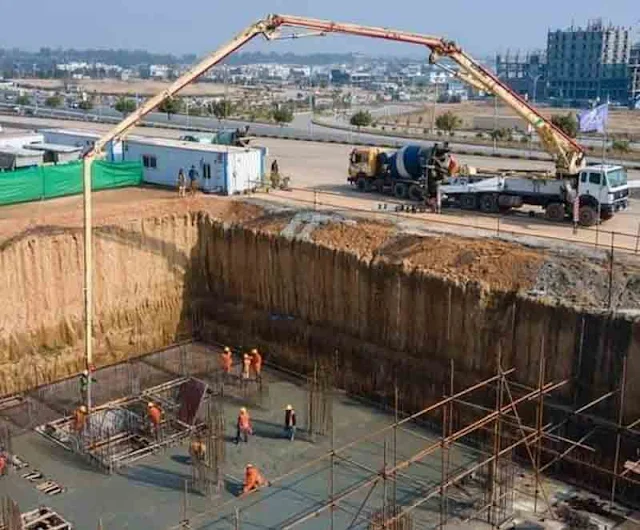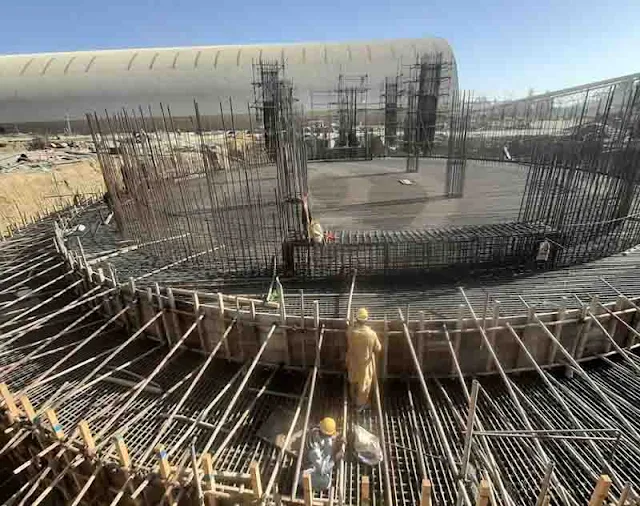In this Article today we will cover about the Mechanism Of Concrete Failure | Factors Affecting on Strength of Concrete | Compressive Strength of Concrete | Porosity | Degree of Compaction | Water-Cement Ratio | Age of Concrete | Compaction of Concrete | What Increases the Strength of Concrete | How Does Aggregate Affect the Strength of Concrete
Compressive Strength of Concrete:
- Strength of concrete is its most valuable property that determines the amount of resistance it can offer against the applied loading.
- Further, it indirectly gives indication about other important characteristics, such as, durability, impermeability and stability against volume changes.
- Strength of concrete is more related to physical structure of the hardened concrete compared with the actual chemical composition.
- It basically depends upon factors that are difficult to study directly including presence of flaws, discontinuities and pores.
- To control the quality of concrete, there is a need to concentrate on aspects that may reduce the flaws, discontinuities and pores.
- For better strength of concrete, a minimum amount of cement is required to coat the aggregate particles and bind them together.
- The concept that greater amount of cement increases the strength directly is not always correct.
- Greater cement increases workability and compaction and reduces W/C ratio, which increase the strength.
- The strength of concrete mainly depends on two factors: 1. Degree of compaction and 2. W/C ratio.
- If more compaction is achieved at a lower W/C ratio, using lesser content of cement with addition of plasticizers, etc., the strength of concrete may be higher.
- In general, compressive strength of concrete is measured by performing tests on concrete cylinders or cubes.
- However, even the compressive strength also depends upon the tensile strength.
- A compression test specimen fails by crushing that may also be considered as the splitting in the perpendicular direction due to Poisson’s effect and slenderness effect.
- The concrete strength is indeed controlled by limiting strain rather than a maximum stress level.
- The compressive strain causing failure is approximately 0.002 for a 70 MPa concrete to 0.004 for a 14 MPa concrete.
Mechanism Of Concrete Failure In Compression:
- Very fine cracks are present in hardened concrete at the surface of coarse aggregate before the application of load and are called bond cracks.
- These cracks appear due to differential volume changes between the aggregate and the cement paste.
- The differential volume changes are caused by different stress-strain behavior, coefficient of thermal expansion and moisture movement patterns.
- The bond cracks do not open up to approximately 30 percent of the ultimate strength.
- At a stress level of approximately 30 to 70 percent of the ultimate strength, bond cracks grow in number, length and width.
- At this stage, the stress-strain curve becomes somewhat nonlinear due to development of more strain.
- In this range of applied stress, the cracks are not usually interconnected with each other and are termed micro-cracks.
- At stress levels of 70 to 90 percent, cracks through the mortar appear that connect the bond cracks to form longer interconnected cracks.
Factors Affecting Strength Of Concrete:
1. Porosity
- The reduction in concrete strength with the amount of voids is given in Table 22.1.
- This is the main factor that influences strength, but by itself this is mainly controlled by the W / C ratio of the mix.
- Pores are produced in the hardened concrete due to two main reasons.
- The first reason is the presence of entrapped air in concrete due to compaction less than 100 percent (air voids are produced).
- The second reason is the evaporation of water from the hardened concrete (may be called water pores).
- The water added to a concrete mix remains as combined water, gel water and capillary water in the hardened moist cured concretes.
- The combined water is the water that is chemically combined or permanently held within crystals as water of hydration.
- This water does not evaporate upon drying up to 105° C, and amounts to approximately 23 percent of the mass of dry cement.
- The gel pores are very small pores of about 2 × 10−6 mm diameter formed by the crystals of hydrates containing gel water.
- The gel water is approximately 28 per cent of the cement gel volume.
- Capillary pores are relatively larger pores, approximately 0.001mm in diameter, formed within the gel due to the fact that the hydrate-crystals occupy less volume than the original unhydrated constituents (water and cement).
- The volume of these pores is approximately 18.5 percent of the dry volume of cement provided that full hydration takes place and there is no excess water added.
- Capillary pores may be filled with capillary water during moist curing.
- A a water / cement ratio of 0.6, all types of pores for fully compacted concrete may occupy 47 to 60 per cent volume of the cement paste.
- Strength of concrete not only depends upon the total volume of pores but also upon the other features such as whether these pores are interconnected or they are separate.
- As already stated, the exact effect of porosity of cement gel is indirectly determined based on the W / C ratio.
2. Degree of compaction
- Compaction is related with the removal of air-voids from the concrete, whereas, porosity deals with the presence of both air and water pores.
- If full compaction is not carried out, air-voids are left in concrete. These large voids significantly reduce the strength as discussed in the topic of workability.
3. Water-cement ratio
- After the degree of compaction, W/C ratio is the single largest factor affecting the strength.
- Larger W/C ratio from a basic value required for full hydration, reduces the strength drastically by increasing the porosity of the cement gel.
- Effective water-cement ratio is to be used for the comparison, which is based on water added for saturated surface dry aggregate.
4. Age of concrete
- The strength of concrete increases with age and this effect is caused by more hydration of cement and reduction of capillary pores.
- The effect is more pronounced at early ages and becomes slow at higher ages.
- After an age of one year, the effect is insignificant.
5. Improper curing and temperature changes
- Improper curing and larger temperature changes produce shrinkage and thermal cracks.
- These cracks further reduce the strength of concrete.
6. Aggregate / cement ratio
- For a constant W / C ratio and full compaction, a leaner mix with larger aggregate / cement ratio develops a higher strength.
- This effect is produced due to lesser porosity of the resulting concrete.
7. Aggregate properties
- The factors like grading, surface texture, shape, strength and maximum size of aggregate also influence the concrete strength.
- For example, the bond cracks may easily develop and propagate for smooth gravel than for rough and angular crushed aggregate.
- Hence, crushed aggregate may develop larger strengths.
- For high strength concretes, failure planes may pass through the larger size aggregate particles and their individual strength also becomes significantly important.
8. Effect of additives and admixtures
- The presence of various additives and admixtures may influence the strength of concrete.
- Usually strengths at ages lesser than 28 days are affected the most.
- However, the final strengths may also vary with the type of cement and presence of any additional chemical in it.
Conclusion:
Full article on Mechanism Of Concrete Failure | Factors Affecting on Strength of Concrete | Compressive Strength of Concrete | Porosity | Degree of Compaction | Water-Cement Ratio | Age of Concrete | Compaction of Concrete | What Increases the Strength of Concrete | How Does Aggregate Affect the Strength of Concrete. Thank you for the full reading of this article in "QA QC Civil Engineering" platform in English. If you find this post helpful, then help others by sharing it on social media.
Full article on Mechanism Of Concrete Failure | Factors Affecting on Strength of Concrete | Compressive Strength of Concrete | Porosity | Degree of Compaction | Water-Cement Ratio | Age of Concrete | Compaction of Concrete | What Increases the Strength of Concrete | How Does Aggregate Affect the Strength of Concrete. Thank you for the full reading of this article in "QA QC Civil Engineering" platform in English. If you find this post helpful, then help others by sharing it on social media.


